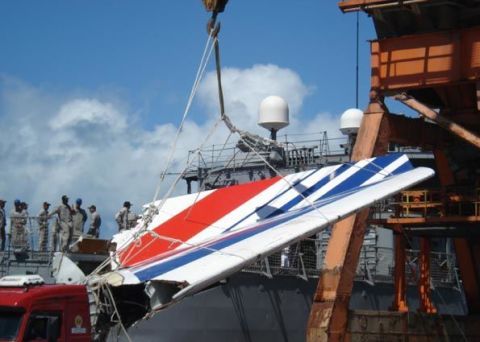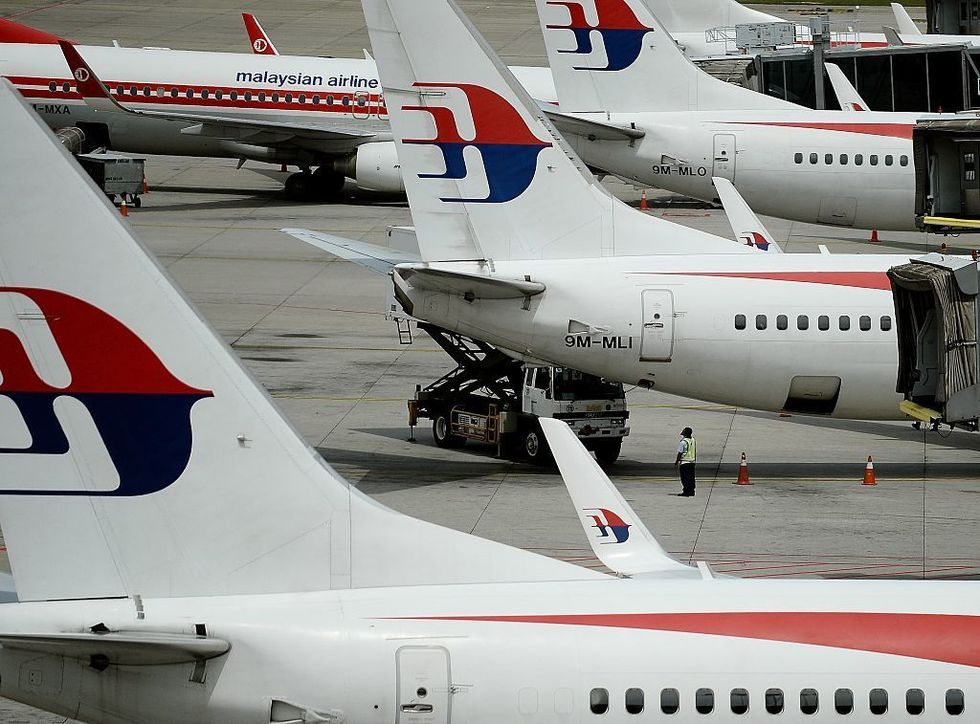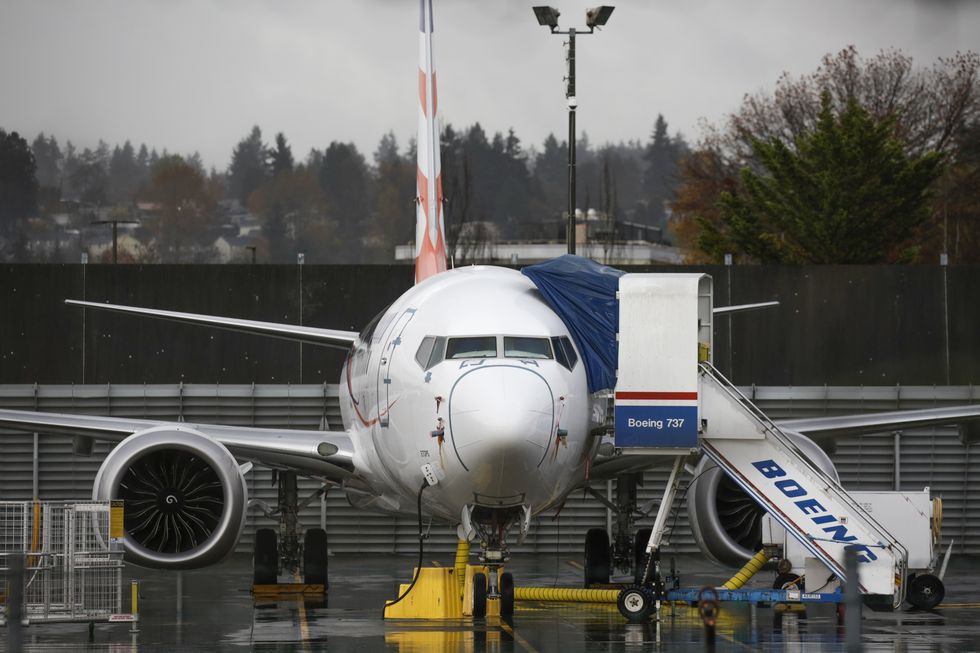
These tragedies triggered major technological advances that keep us flying safe today.
Flying in a jetliner is extraordinarily safe. But air travel only became so reliable because previous accidents ushered in crucial safety improvements. From midair collisions, to onboard fires, and a fatigued fuselage that turned a plane into a high-altitude convertible, these 13 famous airplane crashes triggered major technological advances in flight safety that keep air travel routine today.
1
Grand Canyon | TWA Flight 2 and United Airlines Flight 718

Upgrade: Collision avoidance and a better Air Traffic Control
In the skies above the Grand Canyon on June 30, 1956, two planes that had recently taken off from Los Angeles International Airport—a United Airlines Douglas DC-7 headed to Chicago and a Trans World Airlines Lockheed L-1049 Super Constellation on its way to Kansas City—collided. All 128 passengers and crew aboard both flights were killed.
The accident spurred a $250 million upgrade of the air traffic control (ATC) system, which was serious money in those days. The crash also triggered the creation of the Federal Aviation Agency (now Administration) in 1958 to oversee air safety.
However, further improvements would be implemented after a small private plane wandered into the Los Angeles terminal control area on August 31, 1986, striking an Aeromexico DC-9 and killing 86 people. The FAA subsequently required small aircraft entering control areas to use transponders, or electronic devices that broadcast position and altitude to controllers.
Additionally, airliners were required to have TCAS II collision-avoidance systems, which detect potential collisions with other transponder-equipped aircraft and advise pilots to climb or dive in response. Since then, no small plane has collided with an airliner in flight in the U.S.
2
Portland | United Airlines Flight 173

Upgrade: Cockpit teamwork
On December 28, 1978, United Flight 173, a DC-8 approaching Portland, Oregon, with 181 passengers, circled near the airport for an hour as the crew tried in vain to sort out a landing gear problem. Although gently warned of the rapidly diminishing fuel supply by the flight engineer on board, the captain—later described by one investigator as “an arrogant S.O.B.”—waited too long to begin his final approach. The DC-8 ran out of fuel and crashed in a suburb, killing 10.
In response, United revamped its cockpit training procedures around the then-new concept of Cockpit Resource Management (CRM). Abandoning the traditional “the captain is God” airline hierarchy, CRM emphasized teamwork and communication among the crew, and it has since become the industry standard.
“It’s really paid off,” says United captain Al Haynes, who in 1989 remarkably managed to crash-land a crippled DC-10 at Sioux City, Iowa, by varying engine thrust. “Without [CRM training], it’s a cinch we wouldn’t have made it.”
3
Cincinnati | Air Canada Flight 797

Upgrade: Lavatory smoke sensors
The first signs of trouble on Air Canada 797, a DC-9 flying at 33,000 feet en route from Dallas to Toronto, on June 2, 1983, were the wisps of smoke wafting out of the rear lavatory. Soon, thick black smoke started to fill the cabin, and the plane began an emergency descent. Barely able to see the instrument panel because of the smoke, the pilot landed the plane in Cincinnati. But shortly after the doors and emergency exits were opened, the cabin erupted in a flash fire before everyone could get out. Of the 46 people aboard, 23 died.
The FAA subsequently mandated that aircraft lavatories be equipped with smoke detectors and automatic fire extinguishers. Within five years, all jetliners were retrofitted with fire-blocking layers on seat cushions and floor lighting to lead passengers to exits in dense smoke. Planes built after 1988 have more flame-resistant interior materials.
4
Dallas/Fort Worth | Delta Air Lines Flight 191

Upgrade: Downdraft detection
As Delta Flight 191, a Lockheed L-1011, approached for landing at Dallas/Fort Worth Airport on August 2, 1985, a thunderstorm lurked near the runway. Lightning flashed around the plane at 800 feet, and the jetliner encountered a microburst wind shear—a strong downdraft and abrupt shift in the wind that caused the plane to lose 54 knots of airspeed in a few seconds.
Sinking rapidly, the L-1011 hit the ground about a mile short of the runway and bounced across a highway, crushing a vehicle and killing the driver. The plane then veered left and crashed into two huge airport water tanks. Onboard, 134 of 163 people were killed.
The crash triggered a seven-year NASA/FAA research effort, which led directly to the onboard forward-looking radar wind-shear detectors that became standard equipment on airliners in the mid-1990s. Only one wind-shear-related accident has occurred since.
5
Sioux City | United Airlines Flight 232

Upgrade: Engine safety improvements
United Airlines flight 232 was en route from Denver to Chicago on July 19, 1989 when the engine in the tail of the DC-10 suffered engine failure, severing the plane’s hydraulic lines and rendering the plane virtually uncontrollable. What followed for 296 people aboard was a horrific ordeal as the captain, Alfred Haynes, struggled to land at a nearby airport. As it crash-landed, the wide-body craft cartwheeled off the runway and caught fire, and it was considered something of a miracle that 185 passengers aboard survived.
The National Transportation Safety Board (NTSB) later determined the accident was caused by a failure by mechanics to detect a crack in the fan disk that ultimately was traced back to the initial manufacture of the titanium alloy material. The accident led the FAA to order modification of the DC-10’s hydraulic system (the plane was already being phased out by many airlines) and to require redundant safety systems in all future aircraft, and it changed the way engine inspections are performed.
6
Maui | Aloha Airlines Flight 243

Upgrade: Retiring tin
As Aloha Flight 243—a weary, 19-year-old Boeing 737 on a short hop from Hilo, Hawaii, to Honolulu—leveled off at 24,000 feet on April 28, 1988, a large section of its fuselage blew off, leaving dozens of passengers riding in the open-air breeze. Miraculously, the rest of the plane held together long enough for the pilots to land safely. Only one person, a flight attendant who was swept out of the plane, was killed.
The NTSB blamed a combination of corrosion and widespread fatigue damage, the result of repeated pressurization cycles during the plane’s 89,000-plus flights. In response, the FAA began the National Aging Aircraft Research Program in 1991, which tightened inspection and maintenance requirements for high-use and high-cycle aircraft.
Post-Aloha, there has been only one American fatigue-related jet accident: the Sioux City DC-10.
7
Pittsburgh | US Airways Flight 427

Upgrade: Rudder Rx
When U.S. Airways Flight 427 began its approach to land in Pittsburgh on September 8, 1994, the Boeing 737 suddenly rolled to the left and plunged 5,000 feet to the ground, killing all 132 people onboard. The plane’s black box revealed the rudder had abruptly moved to the full-left position, triggering the roll. But why?
U.S. Air blamed the plane. Boeing blamed the crew. It took nearly five years for the NTSB to conclude a jammed valve in the rudder-control system had caused the rudder to reverse: As the pilots frantically pressed on the right rudder pedal, the rudder went left.
As a result, Boeing spent $500 million to retrofit all 2,800 of the world’s most popular jetliner. And, in response to conflicts between the airline and the victims’ families, Congress passed the Aviation Disaster Family Assistance Act, which transferred survivor services to the NTSB.
8
Miami | ValuJet Flight 592

Upgrade: Fire prevention in the hold
Although the FAA took anti-cabin-fire measures after the 1983 Air Canada accident, it did nothing to protect passenger jet cargo compartments—despite NTSB warnings after a 1988 cargo fire in which the plane managed to land safely. It took the horrific crash of ValuJet 592 into the Everglades near Miami on May 11, 1996 to finally spur the agency to action.
The fire in the DC-9 was caused by chemical oxygen generators that had been illegally packaged by SabreTech, the airline’s maintenance contractor. A bump apparently set one off, and the resulting heat started a fire, which was fed by the oxygen being given off. The pilots were unable to land the burning plane in time, and 110 people died. The FAA responded by mandating smoke detectors and automatic fire extinguishers in the cargo holds of all commercial airliners. It also bolstered rules against carrying hazardous cargo on aircraft.
9
Long Island | TWA Flight 800

Upgrade: Electrical spark elimination
It was everybody’s worst nightmare: a plane that blew up in midair for no apparent reason. The July 17, 1996 explosion of TWA Flight 800, a Boeing 747 that had just taken off from JFK bound for Paris, killed all 230 people aboard and stirred great controversy.
After painstakingly reassembling the wreckage, the NTSB dismissed the possibility of a terrorist bomb or missile attack and concluded that fumes in the plane’s nearly empty center-wing fuel tank had ignited, most likely after a short circuit in a wire bundle led to a spark in the fuel-gauge sensor.
The FAA has since mandated changes to reduce sparks from faulty wiring and other sources. Boeing, meanwhile, has developed a fuel-inerting system that injects nitrogen gas into fuel tanks to reduce the chance of explosions. It will install the system in all its newly built planes. Retrofit kits for in-service Boeings will also be available.
10
Nova Scotia | Swissair Flight 111

Upgrade: Insulation swap-out
About an hour after takeoff on September 2, 1998, the pilots of Swissair’s Flight 111 from New York to Geneva—a McDonnell Douglas MD-11—smelled smoke in the cockpit. Four minutes later, they began an immediate descent toward Halifax, Nova Scotia, about 65 miles away. But with the fire spreading and cockpit lights and instruments failing, the plane crashed into the Atlantic about five miles off the Nova Scotia coast. All 229 people aboard were killed.
Investigators traced the fire to the plane’s in-flight entertainment network, whose installation led to arcing in vulnerable Kapton wires above the cockpit. The resulting fire spread rapidly along flammable Mylar fuselage insulation. The FAA ordered the Mylar insulation replaced with fire-resistant materials in about 700 McDonnell Douglas jets.
11
Rio to Paris | Air France 447

Upgrade: Manual training to fix over-dependence on automation
Around three hours into its journey from Rio to Paris on June 1, 2009, Air France Flight 447, an Airbus A330-200, headed into an area of severe thunderstorm activity and was never heard from again.
From an envelope-pushing altitude of 38,000 feet, the aircraft entered an aerodynamic stall before plunging into the depths of the southern Atlantic Ocean, killing all 228 people aboard. Several days later, pieces of the wreckage were spotted floating on the water’s surface, but the whereabouts of the rest of the jet remained a mystery for more than 2 years, until a privately-funded search located the bulk of the fuselage, bodies of the victims, and the vital black box recorders.
Investigators had already solved part of the puzzle, relying on automated messages sent from the crippled plane as it went down, revealing that the pitot tubes that track speed had frozen and malfunctioned, setting off a cascading series of events.
With the wreckage now found, the evidence led experts to conclude the crash was caused by the pilots’ failure to take corrective action to recover from the stall.
The findings cast a harsh light on fly-by-wire technology and its reliance on computers, rather than humans, to make the final call on flight decisions. Boeing and Airbus both use fly by wire, but Boeing gives pilots the ability to override automation. The crash prompted a renewed effort to retrain pilots to manually fly the plane–no matter what the computer is telling them.
12
Exact Location Unknown | Malaysia Airlines 370

Upgrade: Real-time flight tracking
There was no May Day call or sign of trouble when Malaysia Airlines Flight 370, a 777 carrying 239 people en route from Kuala Lumpur to Beijing, dropped off the radar screens on March 8, 2014. Eight years later, it’s still aviation’s most agonizing mystery.
The biggest question: why the plane’s transponders were apparently disabled, making the jet almost invisible as it unaccountably changed course and headed south, where some experts believe it flew for up to seven hours on autopilot before running out of fuel and crashing into the Indian Ocean.
In the absence of hard evidence—with few clues in the form of some barnacled flotsam found off the coast of Africa—many competing theories of what happened have arisen, from hypoxia caused by rapid decompression (also the cause of the Helios Flight 522 crash in Greece), to intentional sabotage from a crew member or passenger.
One thing is clear: the world wouldn’t still be looking for the plane if it had been equipped with real-time tracking, which safety experts had been demanding ever since Air France 447. As a result of MH370, the International Civil Aviation Organization has ordered all airlines to install tracking equipment that will keep closer tabs on planes, especially those over the ocean, and aircraft manufacturers are also developing black boxes that would eject and float automatically when a plane hits water.
13
Indonesia and Ethiopia | Lion Air 610 and Ethiopian Airlines 302

Upgrade: Flight Control System on Boeing’s 737 MAX 8 gets an update
On October 29, 2018, Lion Air Flight 610, a Boeing 737 MAX 8, plummeted into the Java sea 13 minutes after it took off from Soekarno–Hatta International Airport in Jakarta, Indonesia. In the weeks following the crash, officials discovered the Pangkal Pinang-bound flight suffered flight-control problems linked, in part, to a flaw in the new aircraft’s Maneuvering Characteristics Augmentation System (MCAS). The system mistakenly pushed the plane’s nose down despite the pilots’ best efforts to correct it.
Five months later, Ethiopian Airlines Flight 302—en route to Nairobi, Kenya, from Addis Ababa, Ethiopia—crashed just six minutes after takeoff. Investigations revealed the Boeing 737 MAX 8 suffered a similar fate as Flight 610. Between the two accidents, 346 people perished.
In the wake of the two incidents, the FAA and Boeing grounded all 737 MAX 8 jets to fully investigate the aircraft, correct wiring issues, repair the flight-control system, and allow pilots to receive more training on the aircraft.
In November 2020, the MAX was deemed safe enough to fly. But its troubles are far from over. In April 2021, Boeing issued a statement ordering the grounding of around 160 MAX 8 jets to address yet another software issue. As of May 9, 2022, there were 581 operational MAX 8 aircraft, according to Simple Flying.

